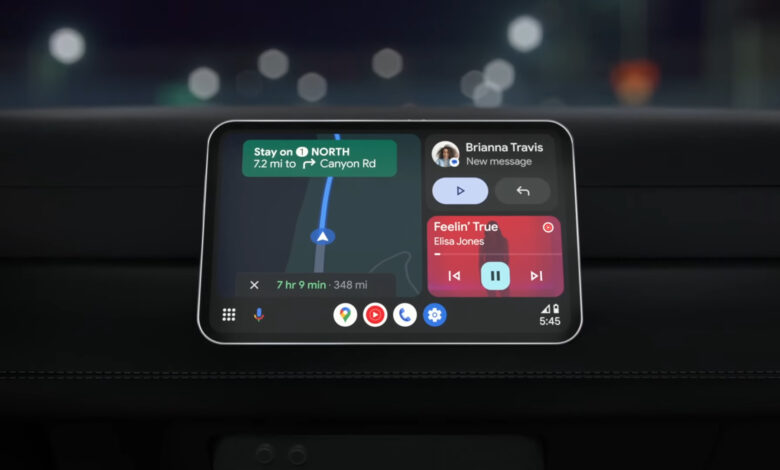7 Google Maps tips to use with Android Auto and CarPlay

Google Maps allows you to customize the app to suit your preferences, making your navigation experience more personalized and efficient. Whether you’re using Android Auto or Apple CarPlay, there are several features you can take advantage of to enhance your driving experience.
One of the key features you can explore in Google Maps is changing the look of your vehicle icon on the map. Instead of the standard blue arrow, you can choose a different driving avatar and color to represent your vehicle. Simply tap on the icon showing three sliders on the preview card displaying the estimated travel time, and select “Driving avatar” to make your choice.
Another useful feature is the ability to find places to stop along your route without interrupting your navigation. If you need to make a pit stop for gas, groceries, or any other reason, you can easily search for nearby locations and add them to your route. Google Maps will show you the best matches along your current route, along with the additional time the detour will take.
Additionally, you can switch up the perspective of the map to suit your preferences. On Android Auto, you can choose between a 3D perspective view, an overhead north up view, and a journey overview by tapping the compass icon on the right. On Apple CarPlay, you have the option of the 3D and north up views by tapping the gear icon on the travel card.
Furthermore, you can help out other road users by reporting incidents on the road using Google Maps. By tapping on the yellow hazard icon on the interface, you can report crashes, congestion, lane closures, and other incidents in your area. Your reports contribute to updating Google’s traffic databases, providing valuable information to other users.
Lastly, you have the option to choose what’s displayed on the screen in Google Maps. Different layers can be shown on the map, allowing you to customize the information you see while navigating. By exploring these features and customizing your Google Maps experience, you can make your driving trips more enjoyable and efficient. When using Google Maps on your vehicle display, you can access additional features by tapping on the gear icon for Android Auto or the travel card followed by the gear icon for Apple CarPlay. These options allow you to view current traffic conditions and switch to a satellite view. On Android Auto, there is also a 3D buildings view available as an alternative to the satellite map.
Sharing your journey with others has never been easier with Google Maps on Android Auto. Simply tap on the three dots on the travel card displaying your estimated journey time and select “Share journey.” A list of contacts will appear, allowing you to choose who you want to share your journey progress with. This feature is useful for letting people know when you’ll arrive at your destination without the need for constant updates.
If you prefer to customize the audio prompts you hear while navigating, Google Maps offers options to mute or unmute audio instructions. On the dashboard, you can tap the speaker icon to adjust the audio settings. In addition to muting the sound, Android Auto users can select “Alerts only” to receive relevant road incident notifications without constant verbal directions.
Overall, Google Maps provides a user-friendly navigation experience with various customization options for a more personalized journey. Whether you’re sharing your route with friends or adjusting audio settings to suit your preferences, these features enhance the overall navigation experience. Explore the different options available on your vehicle display to make the most of your Google Maps navigation. The world of technology is constantly evolving, with new innovations and advancements being made every day. One of the most exciting developments in recent years has been the rise of artificial intelligence (AI). AI has the potential to completely transform the way we live and work, and its impact is already being felt in various industries.
One of the key areas where AI is making a significant impact is in the field of healthcare. AI has the potential to revolutionize the way medical professionals diagnose and treat patients, leading to more accurate and efficient healthcare outcomes. For example, AI-powered algorithms can analyze medical imaging scans such as X-rays and MRIs, helping doctors to detect diseases such as cancer at an earlier stage. This can lead to faster treatment and better outcomes for patients.
AI is also being used to personalize treatment plans for patients, taking into account their individual medical history, genetics, and lifestyle factors. This personalized approach can lead to more effective treatments and better patient outcomes.
In addition to improving patient care, AI is also helping to streamline administrative tasks in healthcare facilities. AI-powered chatbots can help patients schedule appointments, answer questions, and provide information about their treatment plans. This can free up time for healthcare professionals to focus on providing quality care to their patients.
AI is also being used to predict outbreaks of infectious diseases such as COVID-19, allowing public health officials to take proactive measures to prevent the spread of the disease. By analyzing data from sources such as social media, search engines, and healthcare records, AI can identify patterns and trends that indicate the likelihood of an outbreak occurring. This can help to save lives and prevent the spread of disease.
Overall, the potential of AI in healthcare is huge, and its impact is already being felt in various aspects of the industry. As AI technology continues to advance, we can expect to see even more exciting developments that will improve patient care, streamline administrative tasks, and help to prevent and treat diseases more effectively. The future of healthcare is bright, thanks to the power of artificial intelligence. The Effects of Climate Change on Biodiversity
Climate change is a pressing issue that is affecting our planet in a multitude of ways. One of the most significant impacts of climate change is its effect on biodiversity. Biodiversity refers to the variety of life forms on Earth, including plants, animals, and microorganisms. It plays a crucial role in maintaining the health and stability of ecosystems, and any disruptions to biodiversity can have far-reaching consequences.
Climate change is causing shifts in temperature and precipitation patterns, which in turn are altering habitats and ecosystems. Many species are finding it increasingly difficult to adapt to these changes, leading to declines in population numbers and even extinction. In fact, it is estimated that up to one million species are at risk of extinction due to climate change.
One of the most visible effects of climate change on biodiversity is the loss of habitat. Rising temperatures are causing polar ice caps to melt, leading to a loss of habitat for polar bears, penguins, and other Arctic and Antarctic species. Similarly, rising sea levels are inundating coastal habitats, putting species like sea turtles and coral reefs at risk. In addition, changes in precipitation patterns are altering the availability of food and water for many species, leading to declines in population numbers.
Climate change is also causing shifts in the timing of biological events, such as migration, breeding, and flowering. This can disrupt the delicate balance of ecosystems, leading to mismatches between species that rely on each other for survival. For example, changes in the timing of flowering can affect the availability of nectar for pollinators, leading to declines in bee populations. Similarly, changes in the timing of migration can lead to declines in bird populations, as they may arrive at their breeding grounds too late to find suitable food sources.
In addition to direct impacts on species, climate change is also affecting the interactions between species. For example, changes in temperature and precipitation can alter the distribution of species, leading to new interactions between predators and prey. This can lead to declines in prey populations, which in turn can affect the predators that rely on them for food.
Overall, the effects of climate change on biodiversity are complex and far-reaching. It is crucial that we take action to mitigate these impacts and protect the rich diversity of life on Earth. This will require global cooperation and concerted efforts to reduce greenhouse gas emissions, protect habitats, and promote sustainable practices. Only by working together can we ensure a healthy and vibrant planet for future generations.





